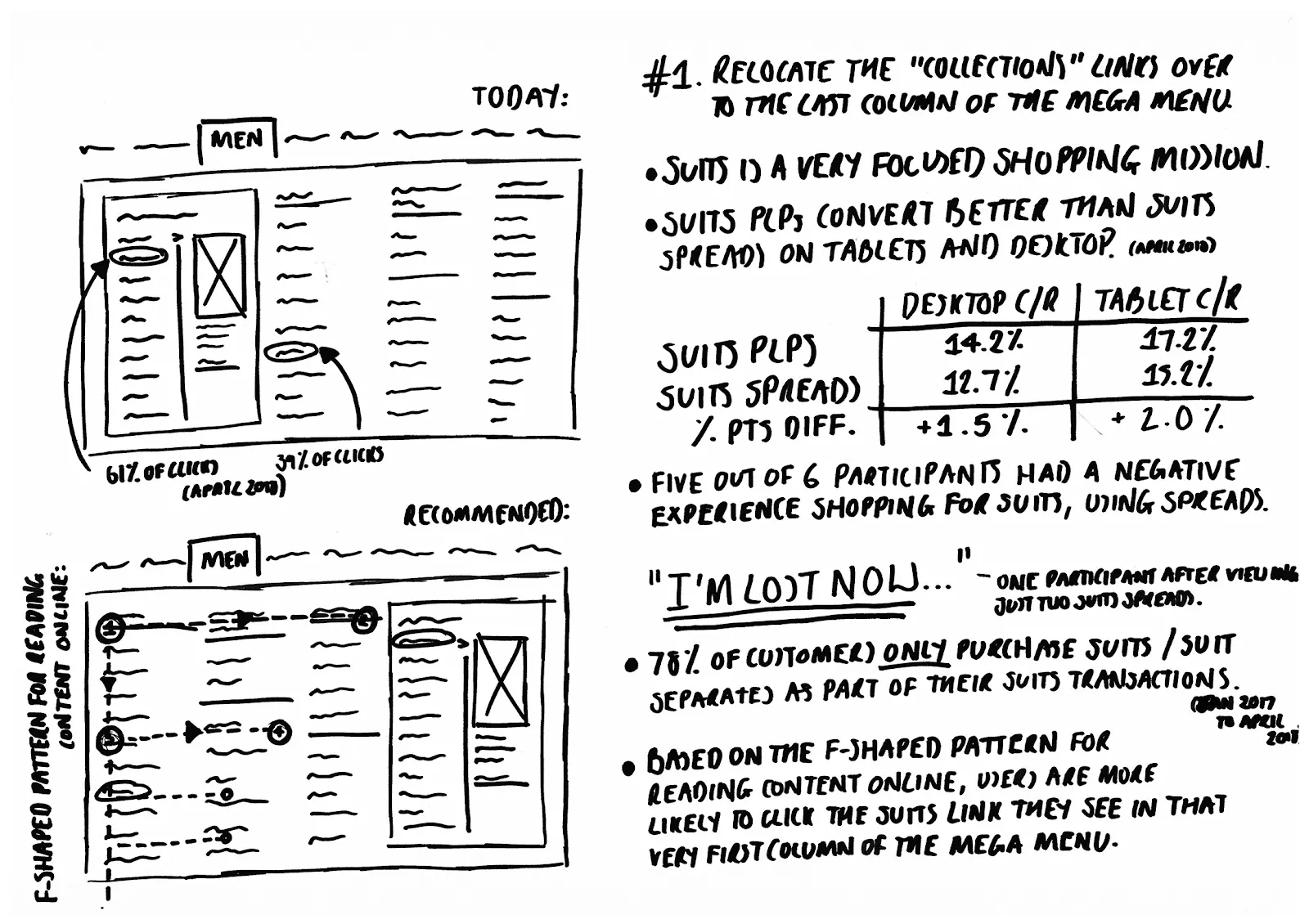
Suit You, Sir!
Imagine searching for the perfect suit online, only to return it in disappointment. For countless men shopping at Next, the UK's biggest fashion and homeware retailer, this was the reality in 2019. As a Senior Mobile UX Architect at Next's Innovation Squad, I usually focus on crafting seamless mobile experiences. But for this project, I donned my User Researcher hat and tackled a puzzling trend: skyrocketing suit return rates. Was it a website issue, a sizing mismatch, or something else entirely?
Trendspotting & The Power of Data
Collaborating with Data Science, I analysed suit orders and returns to identify trends and patterns for targeted User Research. Additionally, Google Analytics provided insights into shoppers' search, filtering, and product page behaviour, leading to key discoveries.
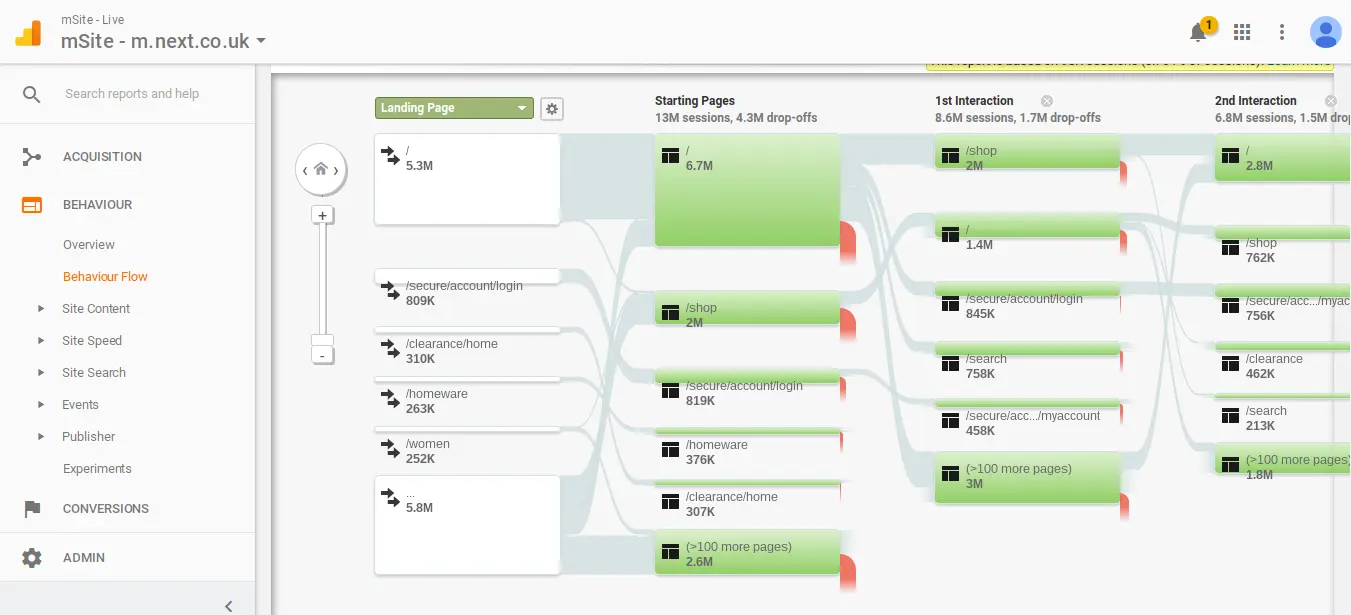
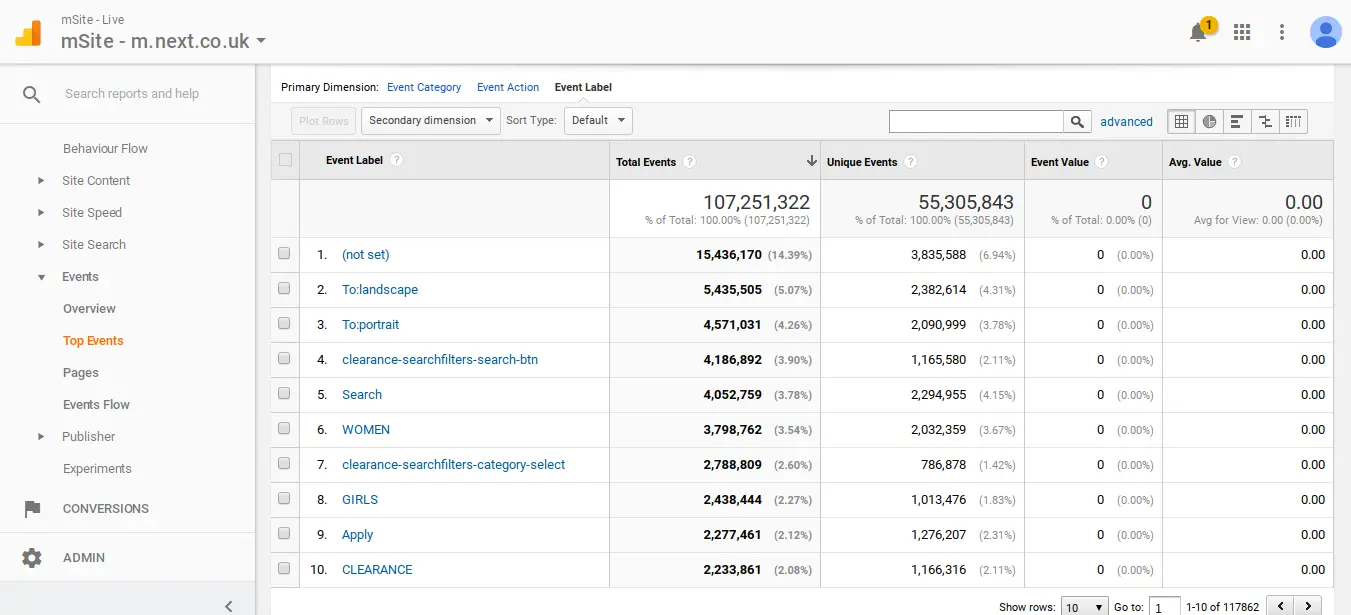
Delving into suit shopping behaviour on Next's mobile site with Google Analytics.
Data-Driven Insights
On average, 13% of customers bought two different sizes of the same garment within their suit order.
- Could this indicate sizing inconsistencies or unclear size guides?
- Are we providing enough information on fit and measurements, especially considering variations across brands or styles?
- Do return reasons mention sizing issues frequently? Analysing specific reasons could illuminate specific pain points.
Around 1% of customers purchased more than three sizes within their suit transaction.
- This suggests significant sizing uncertainty.
- Are product photos and descriptions effectively showcasing the fit and allowing for accurate size comparison?
- Could offering a virtual try-on tool or an improved size comparison feature with specific body measurements boost confidence and reduce multiple size purchases?
Transactions containing a suit item had a return rate of 51%, compared to 36% for general menswear.
- This significant difference highlights specific challenges with online suit shopping compared to other clothing categories. Analysing user behaviour on Product Details Pages (PDPs) representing suits, could reveal pain points or confusion.
- Are return policies clearly communicated?
- Could offering free returns or easier exchange options reduce returns due to hesitation?
Of all customers that bought a suit, 78% had suit items only within their transaction.
- This indicates a dedicated purchase intent, but also potentially missed opportunities.
- Could we personalise their experience by recommending complementary accessories like ties, pocket squares, or shoes based on their chosen suit?
- Would creating curated suit bundles with matching accessories or offering styling inspiration based on their selections increase Average Order Value (AOV) and reduce returns due to incomplete outfits?
My investigation through Google Analytics also revealed that fewer than 1% of all suit shoppers engaged with the ‘Suits Fit Guide’ on the product pages.
But, why?
Sizing Up the Competition
Understanding the broader landscape was crucial. My competitive analysis delved into various suit retailers – from established specialists to high-street giants, and even innovative newcomers offering performance-driven apparel. This helped me identify potential best practices and areas for differentiation.
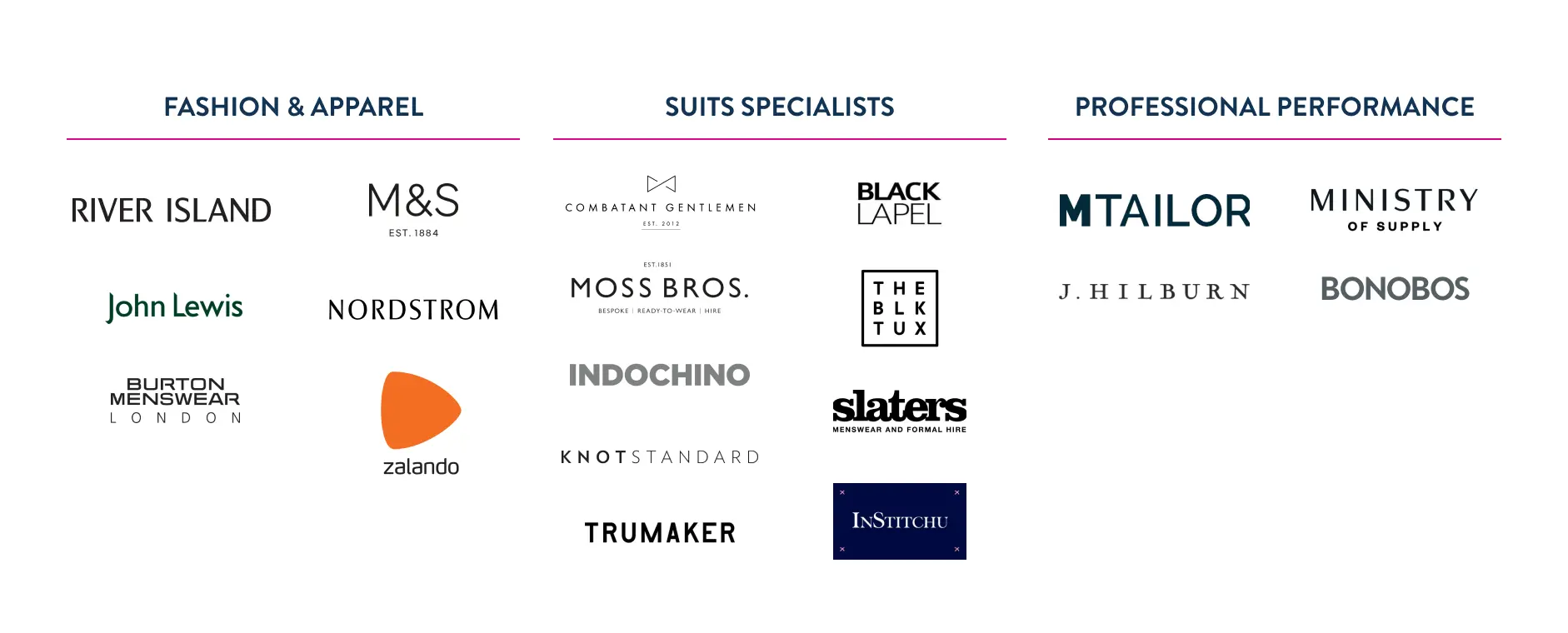
Learning from the Best
Across these websites, I stumbled upon several remarkable features that aided customers in their suit purchasing journey, including:
- FREE Home Try-On
- Ability to Quickly 'Shop by Fit'
- Detailed Breakdowns of Different Fits of Suit
- Videos Showing How to Take Suit Measurements
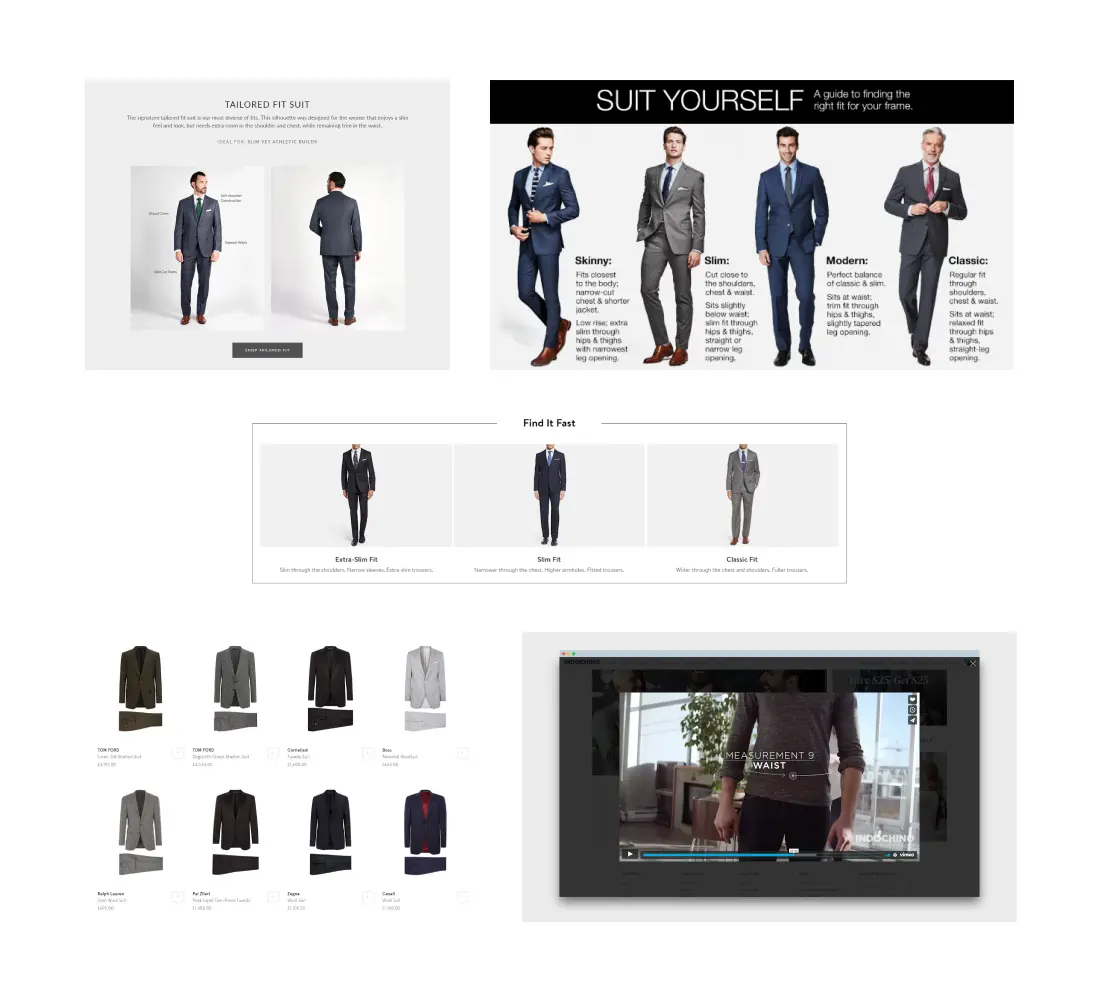
In-Depth Conversations with Suit Shoppers
Armed with data and competitor learnings, I shifted gears to user research. Recruiting a mix of Next and non-Next customers actively seeking suits, I facilitated an in-person session at Babble Research's modern facility in Solihull near Birmingham.
Babble provides a contemporary, dynamic, and cutting-edge facility ideal for conducting user research. This neutral environment fostered open and honest feedback, free from any Next associations.
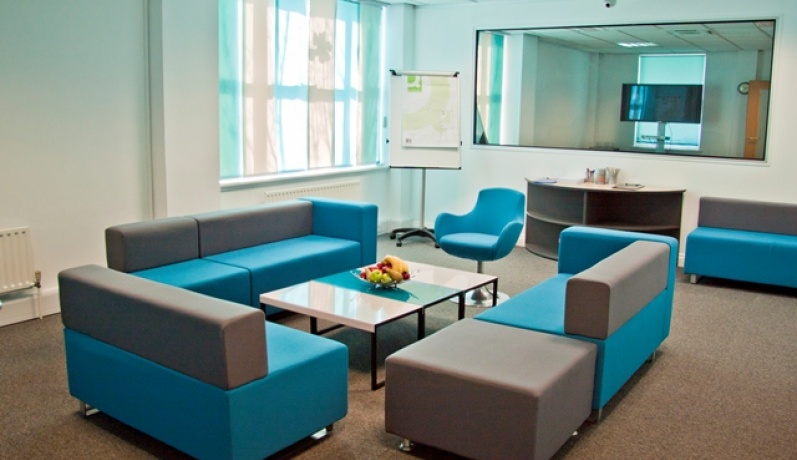
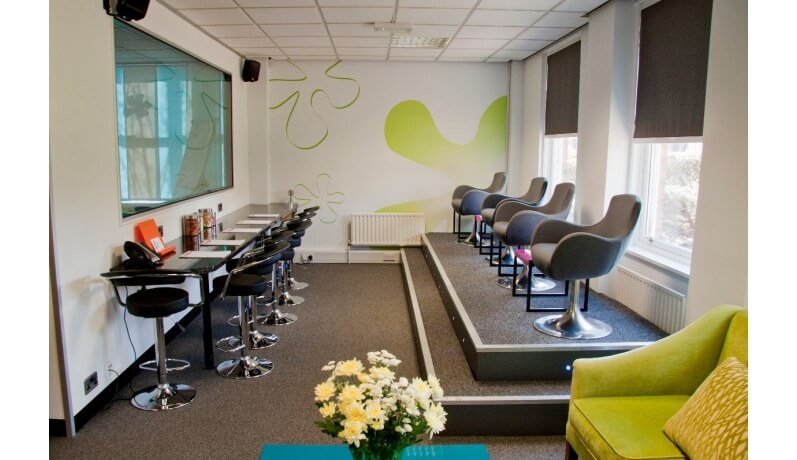
Where stories unfold: Unveiling the open space and mirrored secrets of our participant interviews at Babble Research.
Face-to-Face Interviews
Moving from data analysis to real conversations, I embarked on in-depth interviews with seven suit shoppers (six men, one woman) aged 30-57. This mirrored Next's core demographic, acknowledging the growing number of women actively buying suits online, both for themselves and their partners.
However, our exploration went beyond the clicks and taps. We delved into the omnichannel experience, understanding how online research, inspiration, and physical store visits played a crucial role in their suit-buying journey.
By asking about the occasions for their suits, their research habits, and their interactions with brick-and-mortar stores, we gained valuable insights into their motivations, decision-making processes, and potential pain points across the entire shopping experience.
This holistic approach provided us with an invaluable understanding of how suit buyers navigate the online and offline worlds.
While I collaborated with my User Research colleagues to develop a comprehensive interview guide, a dedicated facilitator from their team conducted the actual questioning. This ensured consistency in asking questions, allowing for deeper dives into participants' responses and fostering a comfortable interview environment. Having the same individual guide these conversations helped us gain a cohesive understanding of suit buyer narratives and pain points, ultimately providing crucial insights that would later shape our research direction.
Key Learnings
- The suit journey typically starts in-store (try before you buy) but then moves online - better stock/sizing availability.
- Average spend on a suit is between £100 and £200.
- Suits are typically replaced every one to two years.
- Customers replace their suit trousers more frequently due to wear and tear.
- Material, comfort and price influence purchasing decision.
- Work, funerals and weddings are all occasions to buy a new suit.
- Suit rental? “The price adds up, so you may as well buy a suit."
- Shoppers don't read suit reviews - it tends to be "trial and error" in finding the right one.
Remote User Testing
Taking ownership of my research approach, I felt a crucial element was missing. While Next's internal data and user interviews offered valuable insights, I believed benchmarking against industry leaders could provide even richer understanding. With this goal in mind, I developed and executed a series of remote user tests using WhatUsersDo (now UserTesting.com). By carefully crafting a participant pool representative of Next's suit shoppers, I ensured the findings would directly inform our own strategy and improvement efforts.
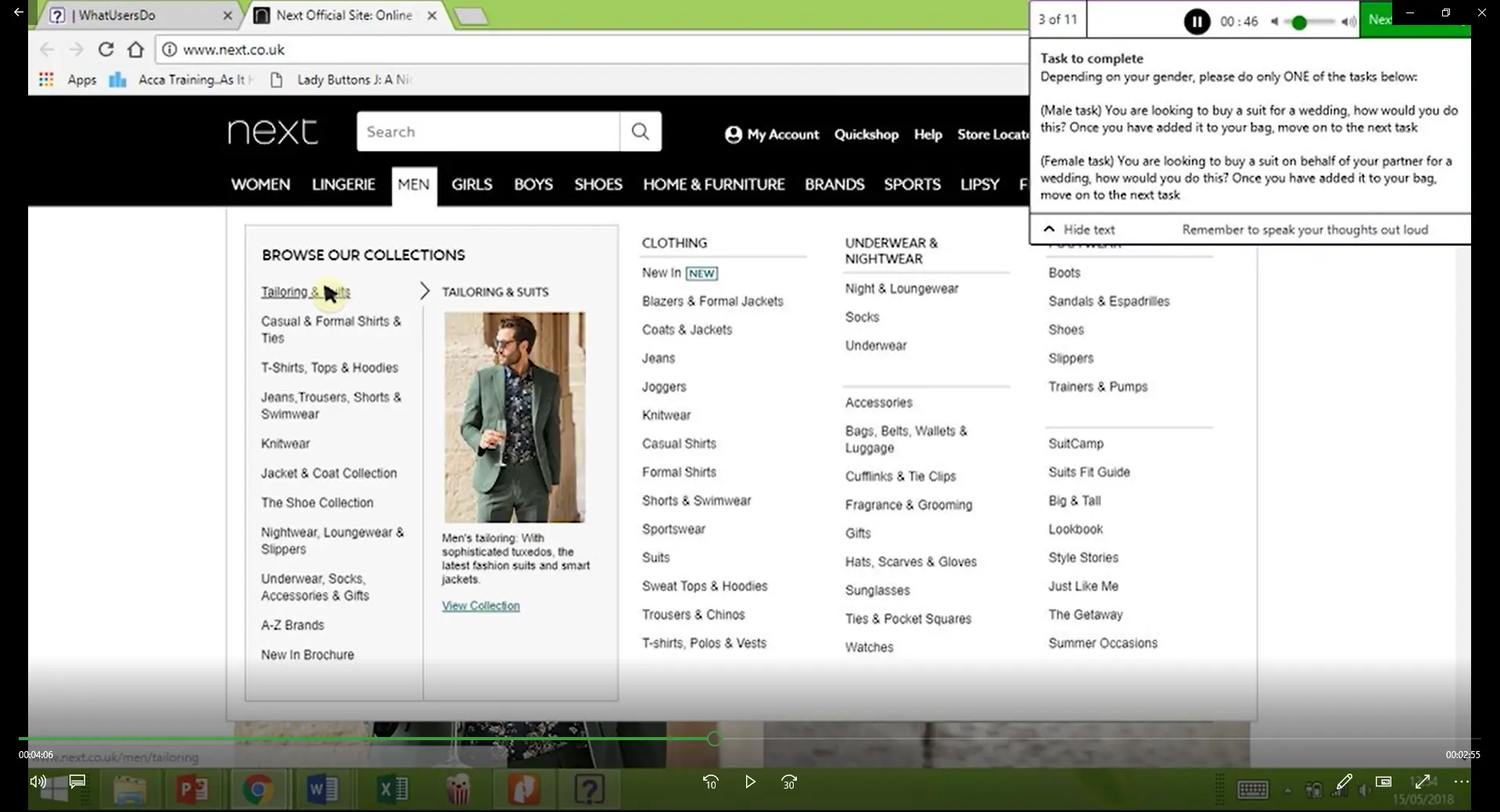
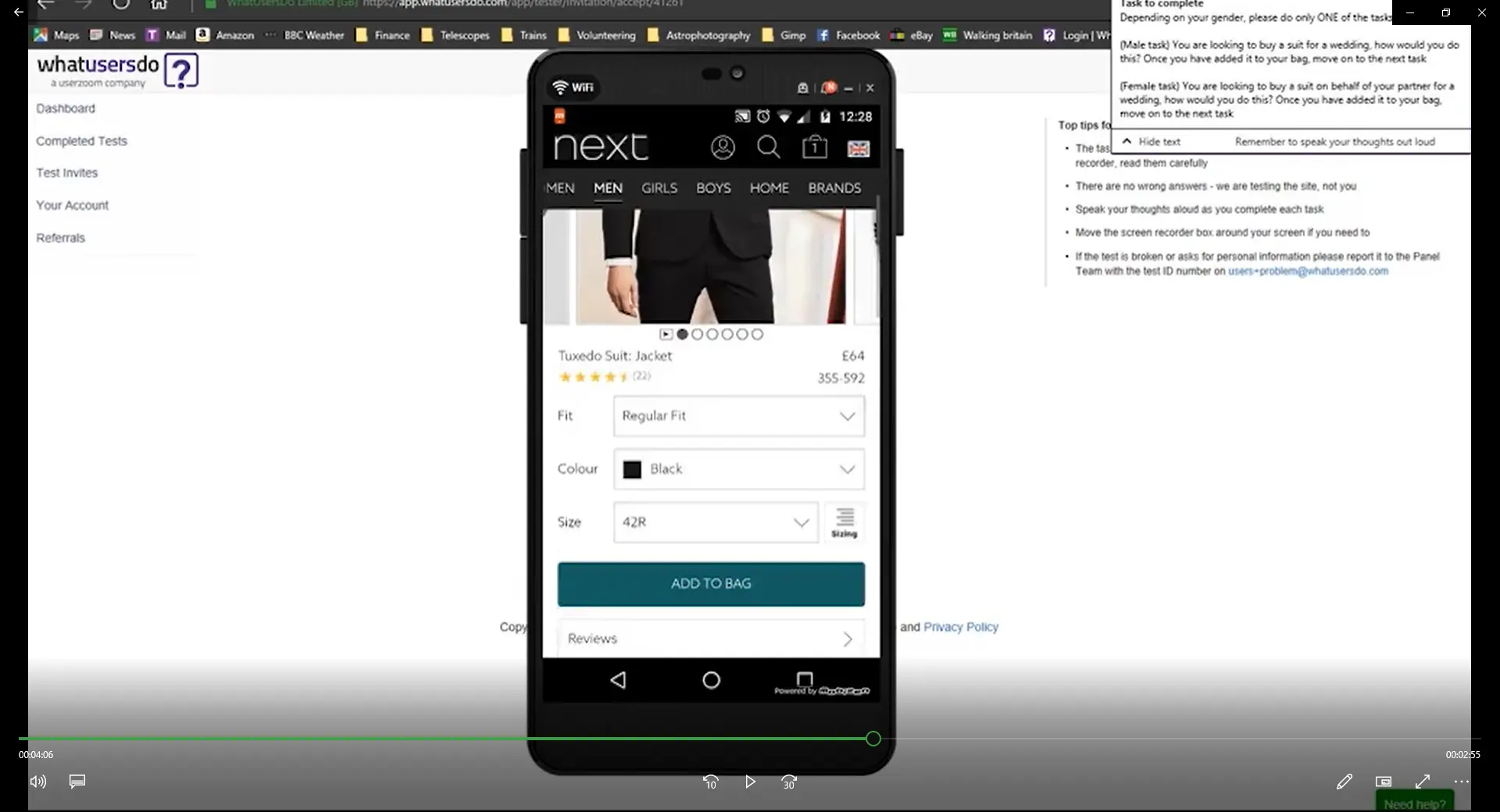
Listening and learning: Capturing user voices and behaviours during remote testing sessions through the WhatUsersDo platform.
Testing Goals
To gain a broader perspective, I benchmarked Next's online suit shopping experience against two key players: Nordstrom, a well-established competitor, and Combatant Gent, an innovative online-only specialist. This allowed me to identify best practices, understand user preferences across different retail models, and ultimately, inform data-driven recommendations for enhancing Next's suit offering.
Test Participants
To gather comprehensive feedback, I recruited a panel of six participants (five males, one female), ensuring a gender-balanced representation of target users. They tested both desktop and mobile versions of each website, with ages ranging from 18 to 62, encompassing digital natives and experienced online consumers. This diverse group provided valuable insights into user preferences across generations and tech skills.
Unlocking Actionable Insights
Beyond the standard user testing reports, I took the initiative to conduct an in-depth, hands-on analysis of all video recordings from the WhatUsersDo platform. While time-consuming, this meticulous approach allowed me to go beyond the surface and extract deeper meaning from each participant's feedback.
My extensive knowledge of Next and its customer base enabled me to identify subtle nuances and emotional cues that might have been missed by automated analysis. This rich understanding was then translated into a compelling and actionable summary for our senior stakeholders, providing invaluable insights to shape the future of Next's suit offering.
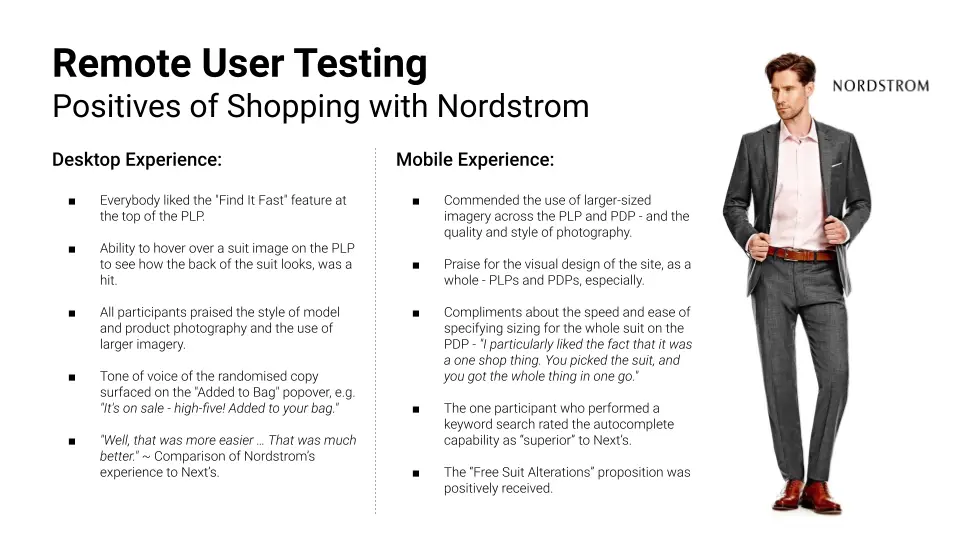
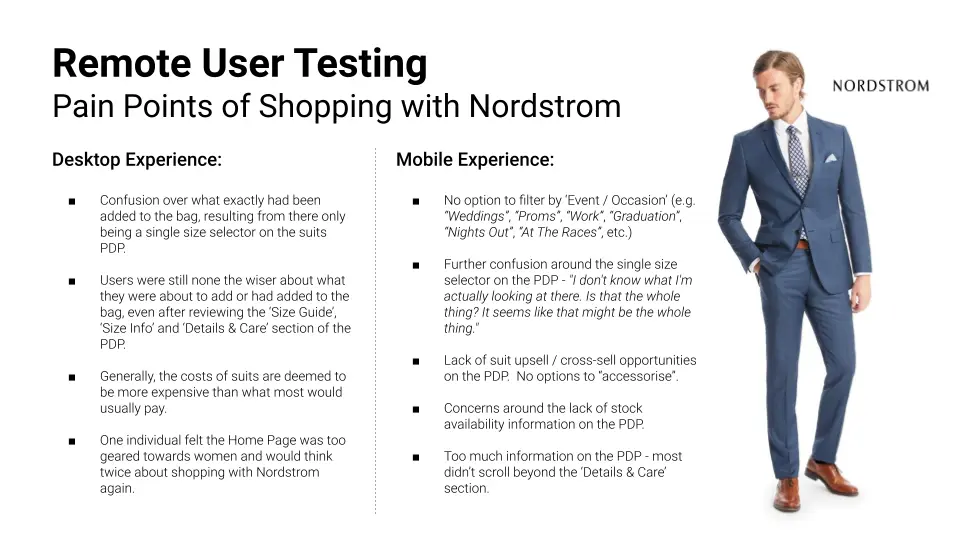
Bridging the gap: Transforming user observations into valuable insights for internal stakeholders.
Fix Up, Look Sharp!
Leveraging the deep understanding gained through user research, I developed a compelling roadmap for enhancing the Next suit shopping experience. This included ten key recommendations aimed at addressing user pain points and optimising the online journey. Below, you'll find a glimpse into the initial wireframe concepts that visualise these proposed improvements.
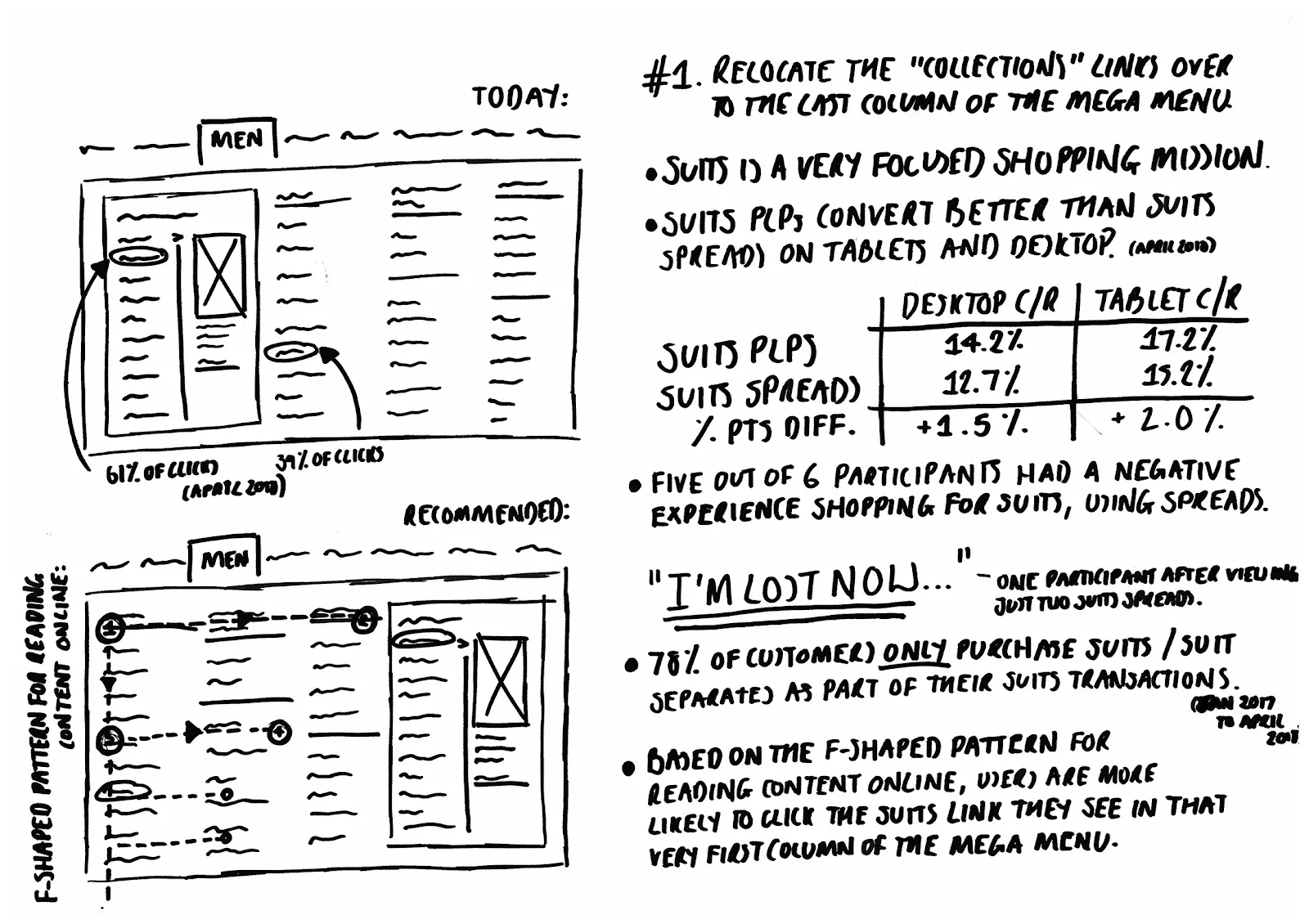
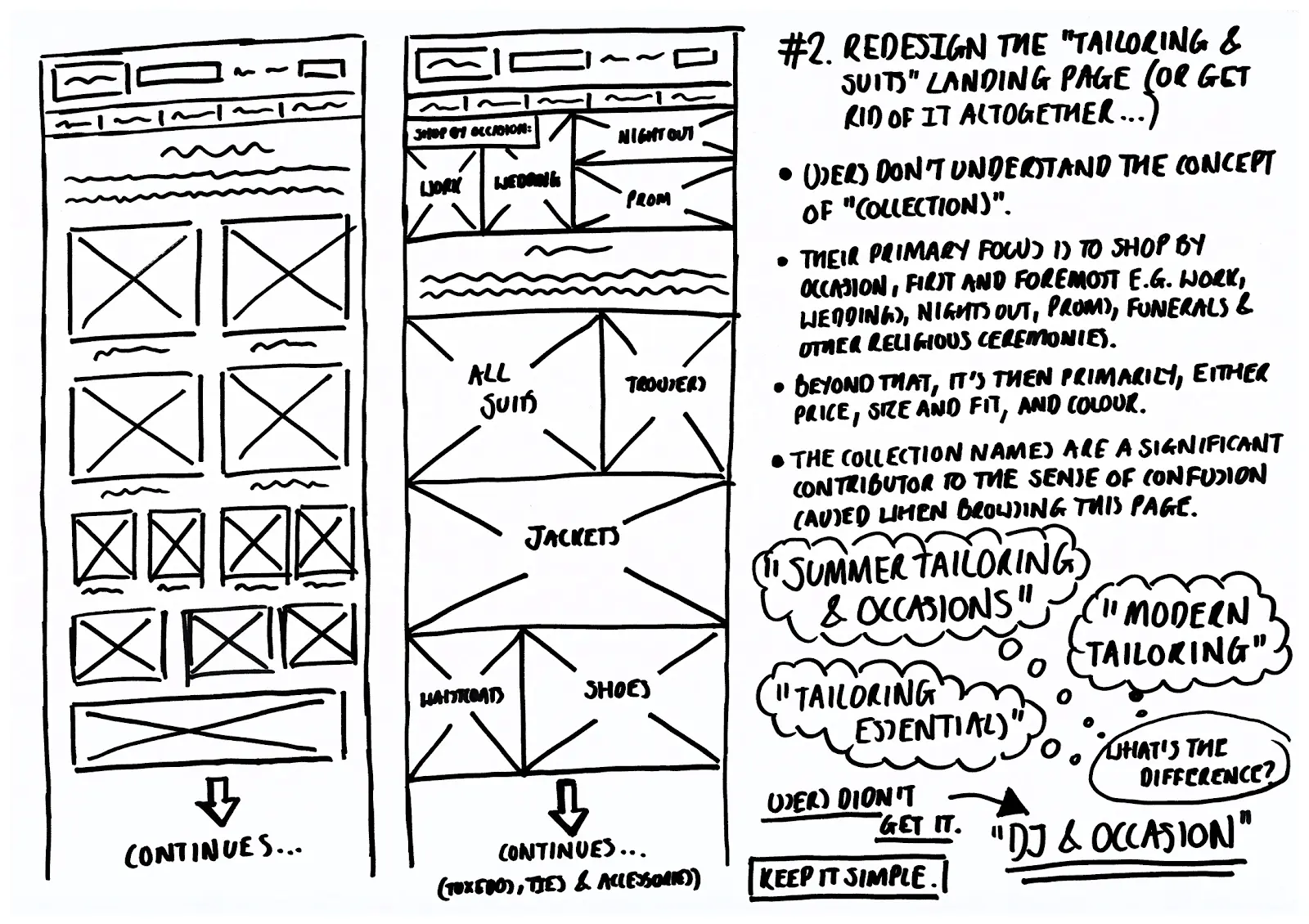
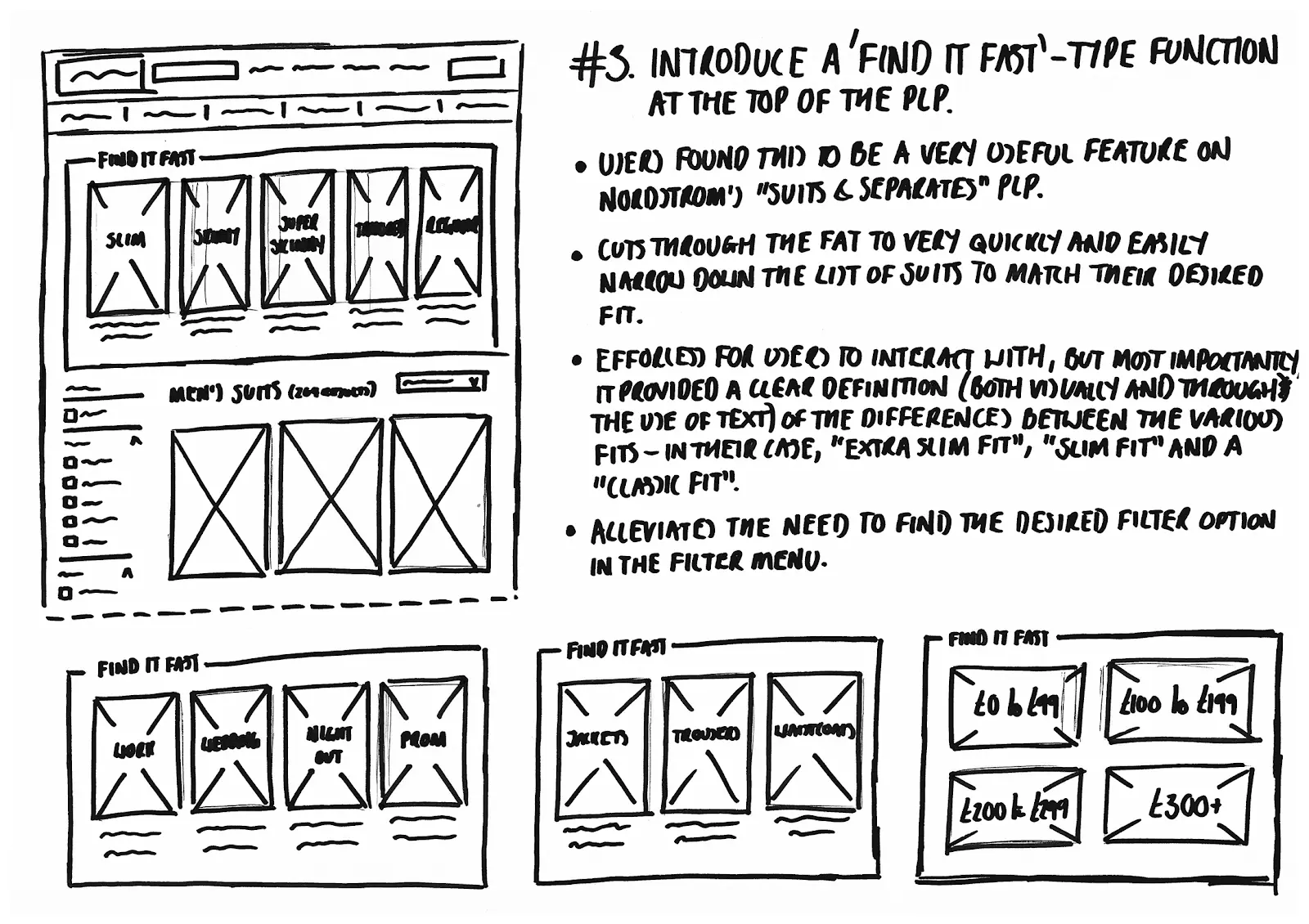
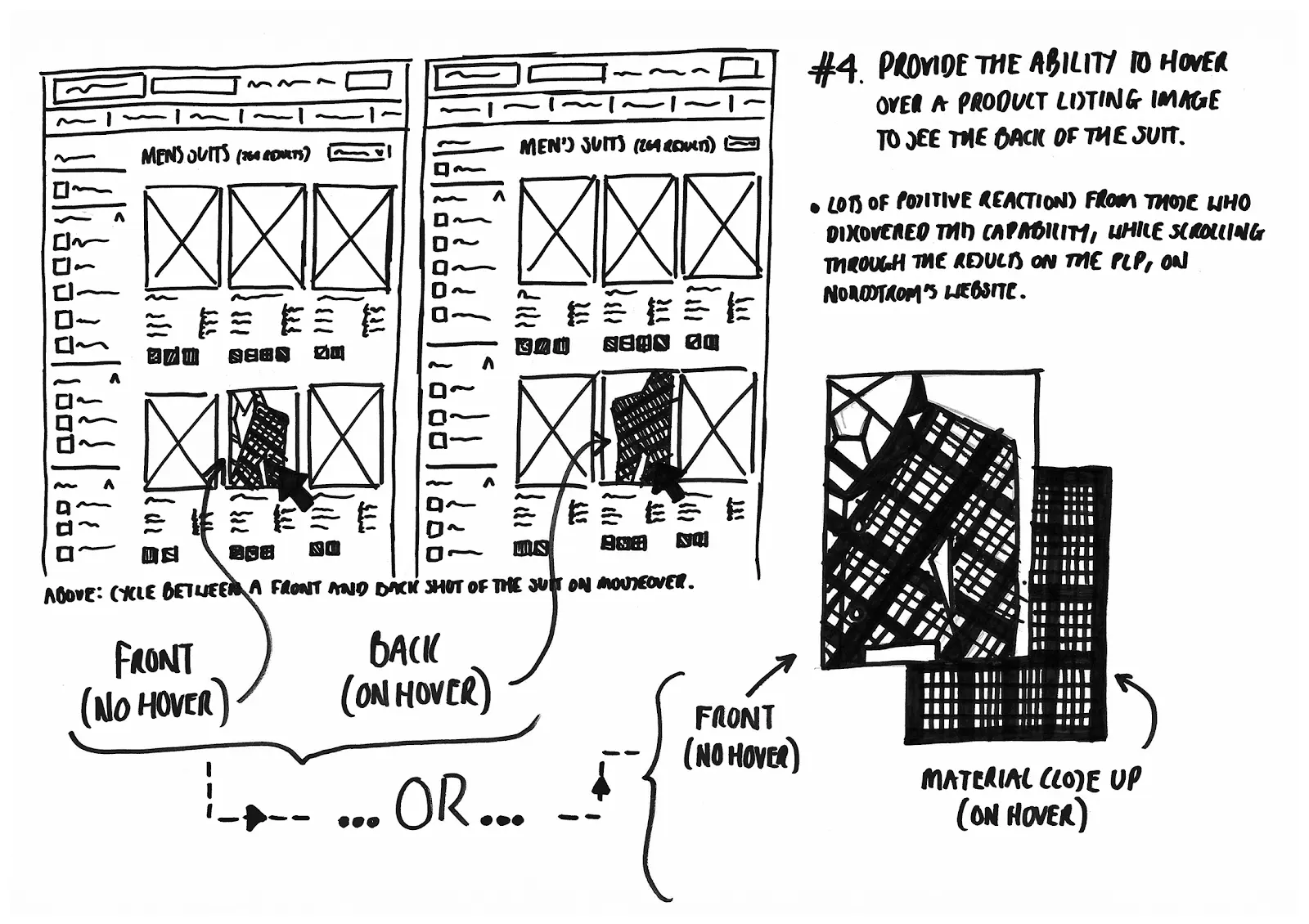
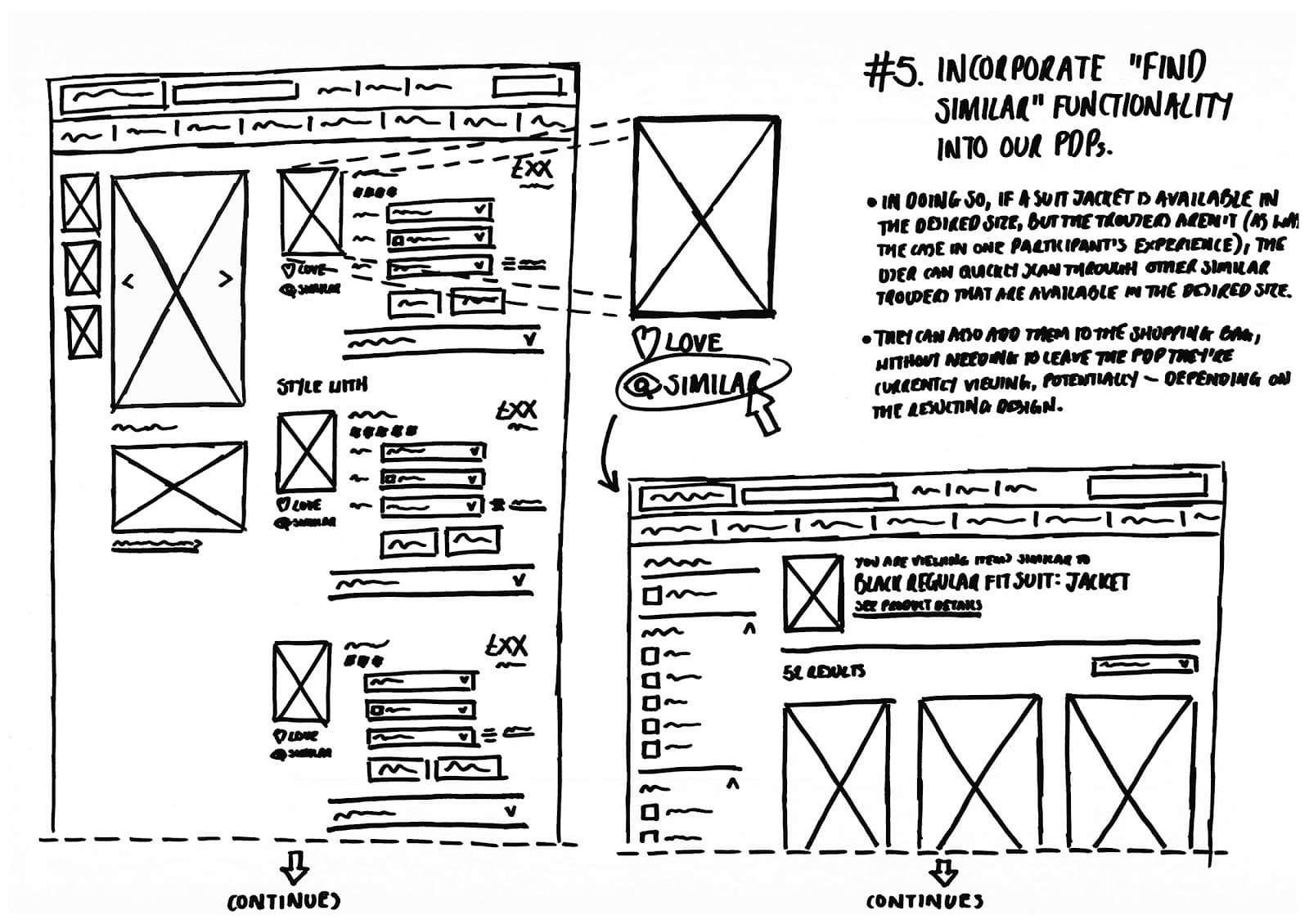
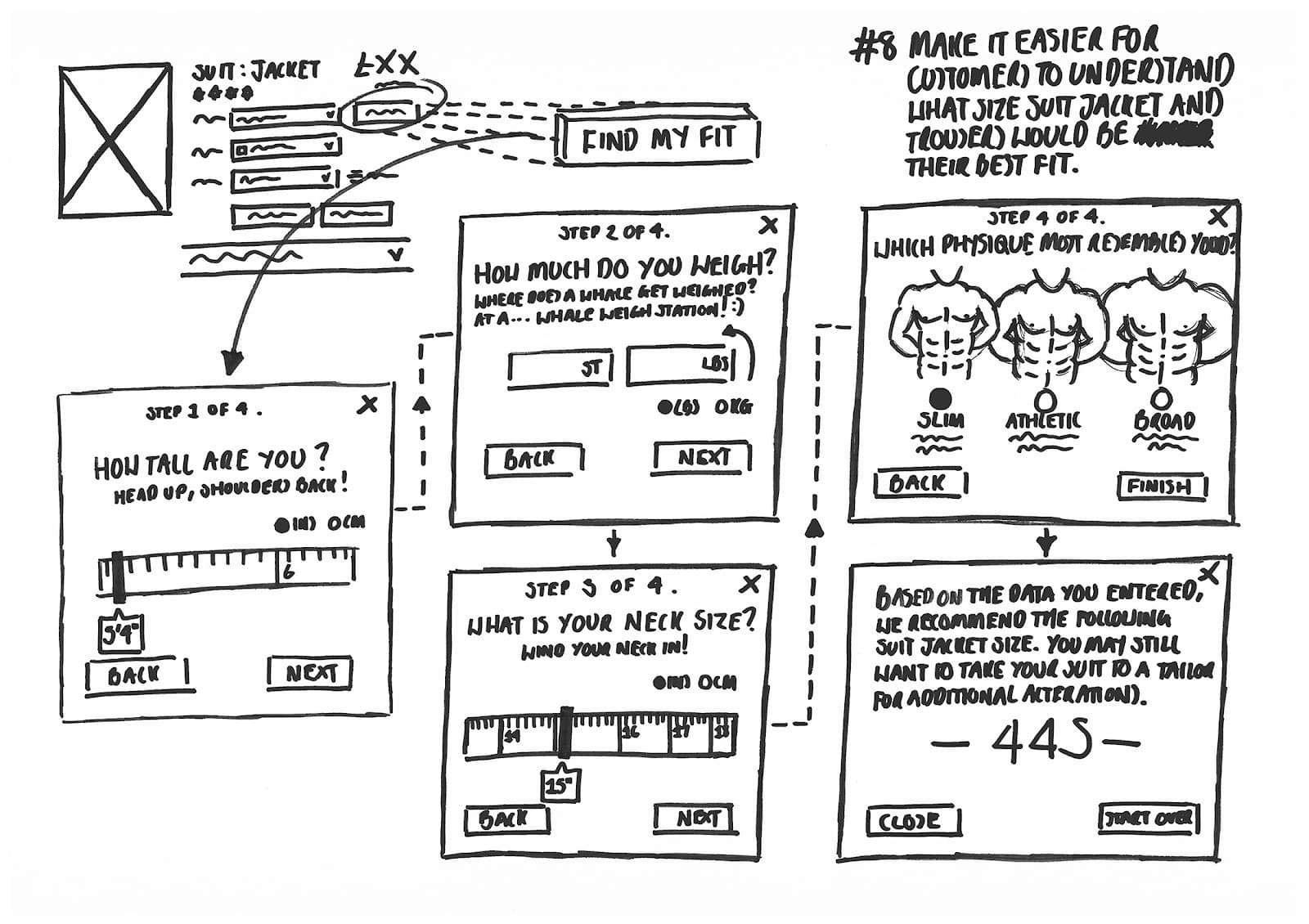
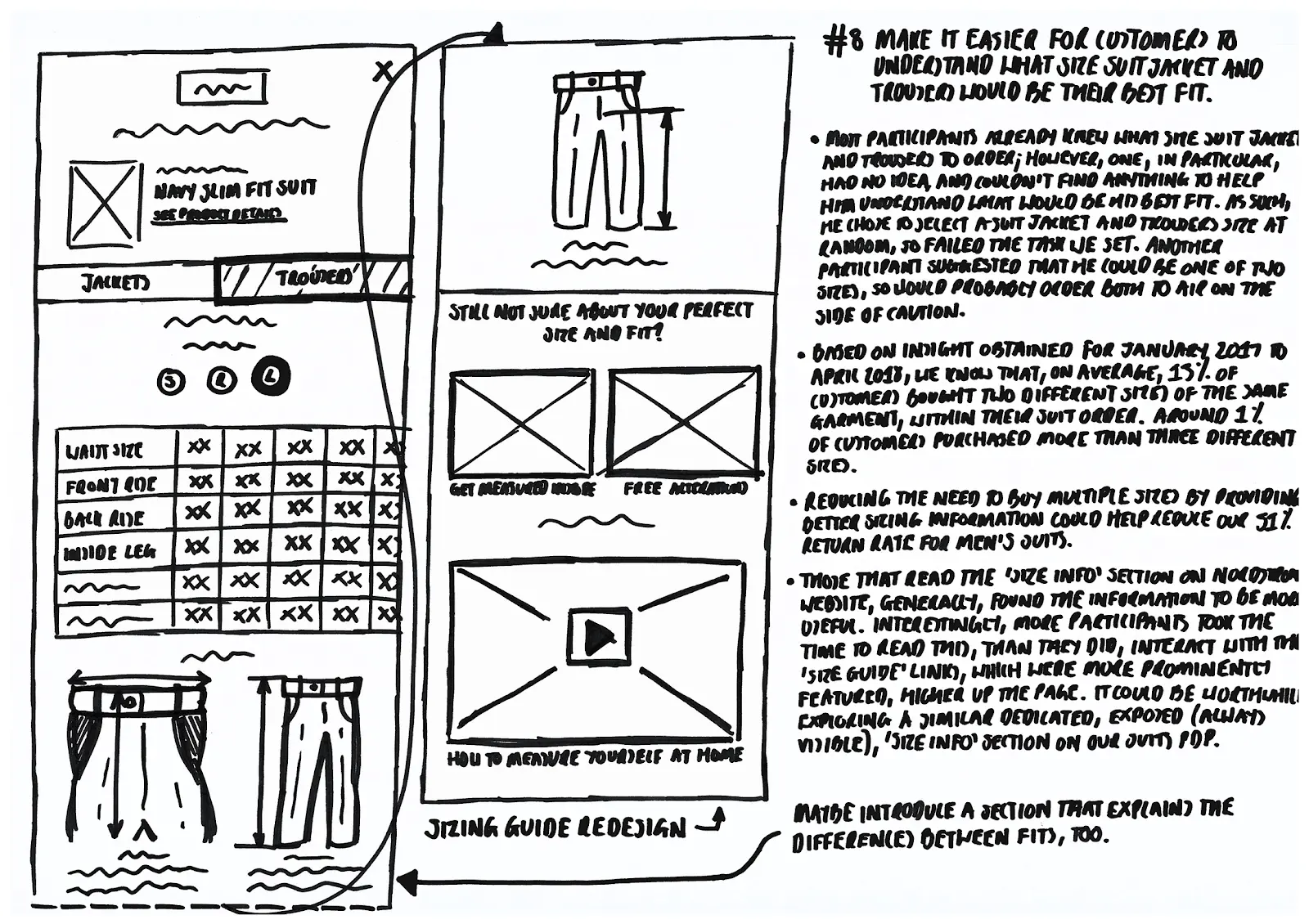
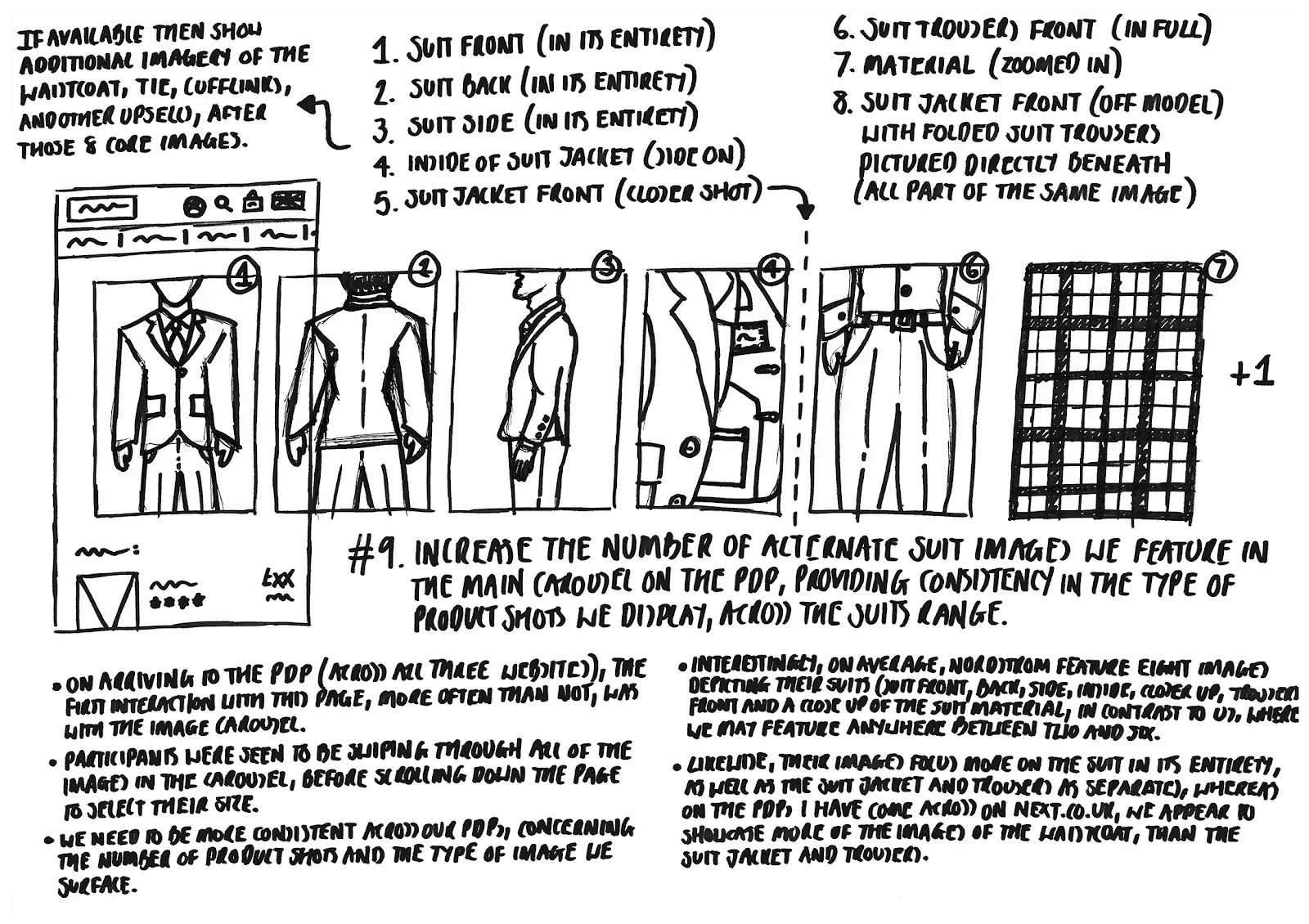
From insights to ideas: Exploring 8 unique wireframe directions informed by user research and data.
From Insights to Impact
Eager to translate insightful discoveries into tangible improvements, I presented my proposed suite of improvements to the Menswear Category Manager.
Among them, one stood out: a revamped navigation menu design based on the efficient "F-Pattern". This user-centric approach, informed by countless hours of observing real users scan website content, promised smoother navigation and quicker discovery of desired items.
The Category Manager immediately recognised its potential and championed its swift implementation.
The core principle of the "F-Pattern" involves mimicking the user's natural eye movement pattern - a horizontal scan across the top followed by a downward dip and another horizontal scan. By prominently placing the "Suit" link within the primary viewing area, aligned with this pattern, we ensured it would be readily noticed and clicked.
And the results?
Within the first week, we witnessed a remarkable 37% increase in clicks on the "Suit" link, a clear indication that users were finding what they needed faster and easier.
This wasn't just a number; it represented a tangible impact on Next's business performance, demonstrating the power of user-centred design and the real-world value of user research.
The success of this initial implementation fuelled further collaboration, paving the way for the integration of additional recommendations – ultimately contributing to a more seamless and successful suit shopping experience for Next's customers.
Tailoring Tomorrow
The Next suit project was a well-fitted learning experience, but like any good tailor, there's always room for improvement. Here's what I'll stitch into my research toolbox for the future:
Casting a Wider Net:
- Diversify participant pools beyond initial demographics. Seek platforms with broader reach for richer user perspectives.
Weaving a Stronger Fabric:
- Integrate quantitative data alongside qualitative findings to create a robust evidence base. This strengthens the thread connecting insights to action.
This project was a valuable learning curve, and I'm eager to tailor my approach even further in future endeavours.


